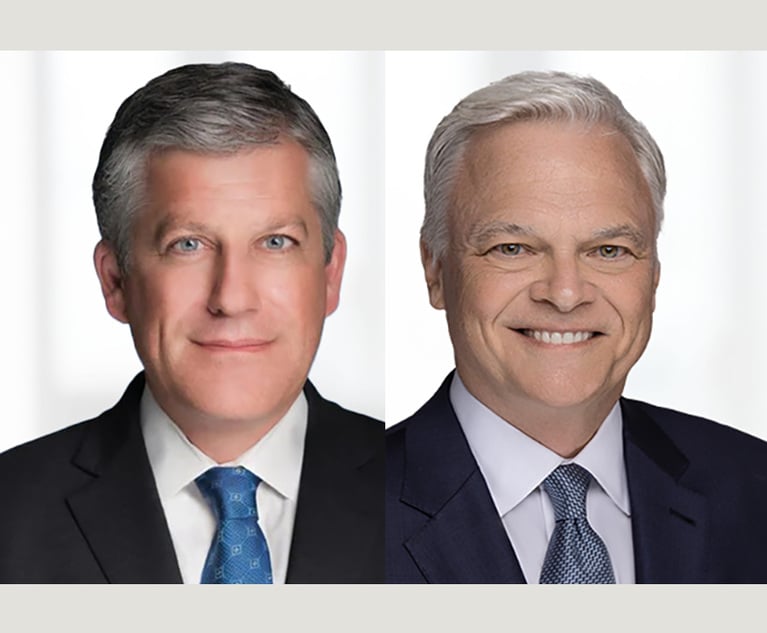 Nicole D. Galli, f ounder and managing member of ND Galli Law
Nicole D. Galli, f ounder and managing member of ND Galli Law Practicing Law in the 'Golden Age' of Trade Secrets
Today, it seems trade secrets lawyers are multiplying like mushrooms after a rainstorm—coming not only from the employment bar, but also from IP, particularly the patent bar.
October 27, 2023 at 10:36 AM
10 minute read
When I started practicing law over 30 years ago—as hard as it is for many people to believe now—patent litigation was not "the thing" it is today. The U.S. Court of Appeals for the Federal Circuit, which is the court that hears all appeals in patent cases, was then only 4 years old. Patent "trolls," as such, did not yet exist, although "submarine" patents did (Lemelson's being the most well known). Some of the most famous patent owner friendly courts (e.g., the U.S. District Court for the Eastern District of Texas) had yet to emerge, and there were virtually no local patent rules. On the business side of the law, most firms in "Big Law" did not have a single patent attorney in the firm (and if they did, they had just one or two), and even those that did often did not handle patent cases. Thirty years later, this seems unthinkable.
There were also numerous unanswered legal questions, such as whether claim construction was a fact or legal question, which was not settled until the U.S. Supreme Court's ruling in Markman v. Westview Instruments, 517 U.S. 370 (1996). Methods for calculating damages in patent cases were uncertain—today, all patent litigators are familiar with concepts such as "apportionment" and the "entire market value" rule. In many cases, it is inappropriate to apply a royalty on the entire value of an item being sold. Instead, the royalty base should be limited to the portion of the value derived from the use of the patent invention. And of course there is the whole evolution of what inventions are considered "patent eligible" under Section 101 of the Patent Act—a standard which has been (and to some degree remains) a moving target over the last 30 years.
This content has been archived. It is available through our partners, LexisNexis® and Bloomberg Law.
To view this content, please continue to their sites.
Not a Lexis Subscriber?
Subscribe Now
Not a Bloomberg Law Subscriber?
Subscribe Now
NOT FOR REPRINT
© 2025 ALM Global, LLC, All Rights Reserved. Request academic re-use from www.copyright.com. All other uses, submit a request to [email protected]. For more information visit Asset & Logo Licensing.
You Might Like
View All
'Taking the Best' of Both Firms, Ballard Spahr and Lane Powell Officially Merge
6 minute read

Law Firms Mentioned
Trending Stories
- 1The New Rules of AI: Part 2—Designing and Implementing Governance Programs
- 2Plaintiffs Attorneys Awarded $113K on $1 Judgment in Noise Ordinance Dispute
- 3As Litigation Finance Industry Matures, Links With Insurance Tighten
- 4The Gold Standard: Remembering Judge Jeffrey Alker Meyer
- 5NJ Supreme Court Clarifies Affidavit of Merit Requirement for Doctor With Dual Specialties
Who Got The Work
J. Brugh Lower of Gibbons has entered an appearance for industrial equipment supplier Devco Corporation in a pending trademark infringement lawsuit. The suit, accusing the defendant of selling knock-off Graco products, was filed Dec. 18 in New Jersey District Court by Rivkin Radler on behalf of Graco Inc. and Graco Minnesota. The case, assigned to U.S. District Judge Zahid N. Quraishi, is 3:24-cv-11294, Graco Inc. et al v. Devco Corporation.
Who Got The Work
Rebecca Maller-Stein and Kent A. Yalowitz of Arnold & Porter Kaye Scholer have entered their appearances for Hanaco Venture Capital and its executives, Lior Prosor and David Frankel, in a pending securities lawsuit. The action, filed on Dec. 24 in New York Southern District Court by Zell, Aron & Co. on behalf of Goldeneye Advisors, accuses the defendants of negligently and fraudulently managing the plaintiff's $1 million investment. The case, assigned to U.S. District Judge Vernon S. Broderick, is 1:24-cv-09918, Goldeneye Advisors, LLC v. Hanaco Venture Capital, Ltd. et al.
Who Got The Work
Attorneys from A&O Shearman has stepped in as defense counsel for Toronto-Dominion Bank and other defendants in a pending securities class action. The suit, filed Dec. 11 in New York Southern District Court by Bleichmar Fonti & Auld, accuses the defendants of concealing the bank's 'pervasive' deficiencies in regards to its compliance with the Bank Secrecy Act and the quality of its anti-money laundering controls. The case, assigned to U.S. District Judge Arun Subramanian, is 1:24-cv-09445, Gonzalez v. The Toronto-Dominion Bank et al.
Who Got The Work
Crown Castle International, a Pennsylvania company providing shared communications infrastructure, has turned to Luke D. Wolf of Gordon Rees Scully Mansukhani to fend off a pending breach-of-contract lawsuit. The court action, filed Nov. 25 in Michigan Eastern District Court by Hooper Hathaway PC on behalf of The Town Residences LLC, accuses Crown Castle of failing to transfer approximately $30,000 in utility payments from T-Mobile in breach of a roof-top lease and assignment agreement. The case, assigned to U.S. District Judge Susan K. Declercq, is 2:24-cv-13131, The Town Residences LLC v. T-Mobile US, Inc. et al.
Who Got The Work
Wilfred P. Coronato and Daniel M. Schwartz of McCarter & English have stepped in as defense counsel to Electrolux Home Products Inc. in a pending product liability lawsuit. The court action, filed Nov. 26 in New York Eastern District Court by Poulos Lopiccolo PC and Nagel Rice LLP on behalf of David Stern, alleges that the defendant's refrigerators’ drawers and shelving repeatedly break and fall apart within months after purchase. The case, assigned to U.S. District Judge Joan M. Azrack, is 2:24-cv-08204, Stern v. Electrolux Home Products, Inc.






